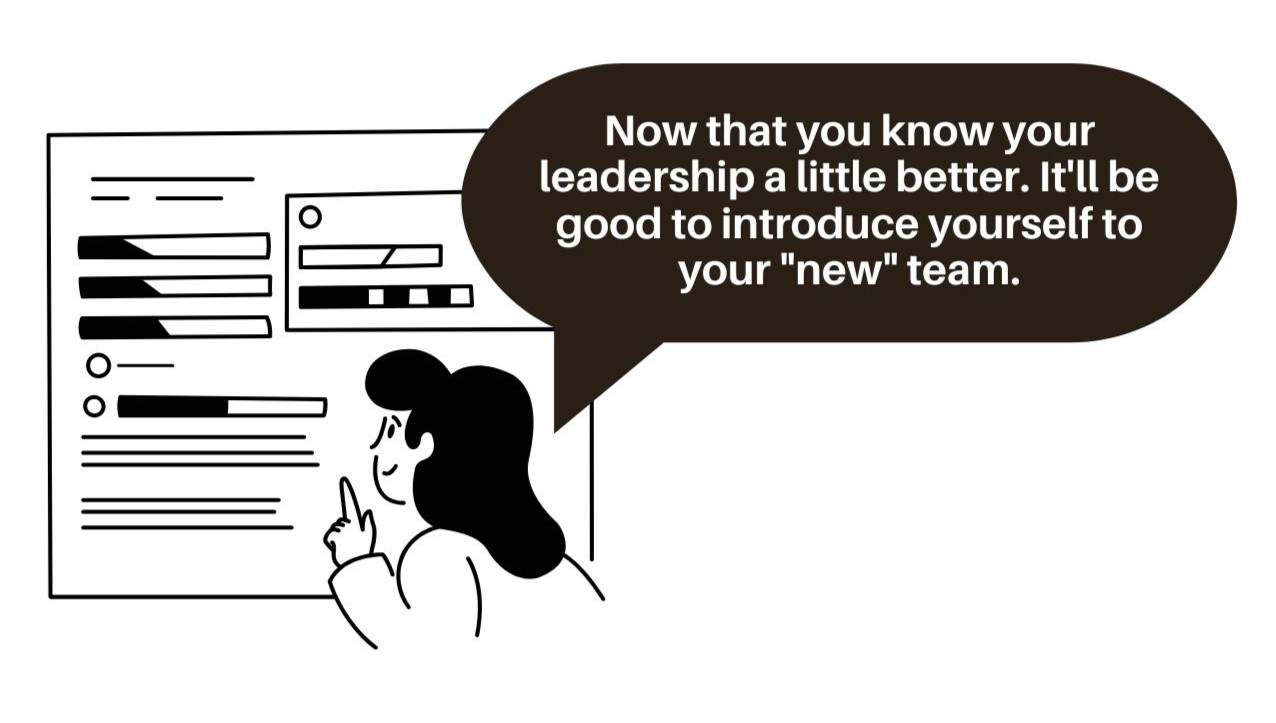- Home
- Leadership Resources
- Leadership Induction Package
Leadership Induction Package
A guide to starting YOUR leadership journey...
On this page
Former Commissioner ICA on Leadership

“As leaders we must always try to create a place whereby people want to wake up in the morning and look forward to going to work. Usually there are three things that make people want to go to work – the bosses that you have, the colleagues that you have, and the kind of work that you do. And these are three things everybody in the organisation can help to shape and make a difference because we are all bosses to somebody, we are all also colleagues to somebody and we all have a say in how we want to shape the work that we do.”
Marvin Sim
Excerpt taken from Home Team Journal Issue 12 (February 2023)
The Journey
What's in this package?
01 - Self Discovery
How do you see yourself & how do others see you?
In your Communication Style - how to collaborate successfully in the workplace?
In your Work Values - what motivates you?
02 - Presenting your leadership to your Team
How do you get started?
01 - Self-Discovery

⏱︎ This section might take you 10 minutes to browse through.
Working towards Self-Awareness
There are 2 types of Self-Awareness
Internal Self-Awareness:
How you see yourself in terms of your own values, passions, goals, and how you fit into your environment. It includes being aware of your thoughts, feelings, behaviours, strengths, and weaknesses, as well as your impact on others.
External Self-Awareness:
How others see you in terms of the same factors—values, behaviours, strengths, and weaknesses.
Balancing both types
Effective leaders balance internal and external self-awareness by understanding themselves clearly and seeking feedback on how others see them.
This balance is crucial for confident, relational and innovative leadership.
What clouds Self-Awareness?

Experience
Experience alone doesn't guarantee self-awareness, as seasoned individuals can still have blind spots.
Power
Power worsens this issue, causing senior leaders to overestimate their skills due to less candid feedback and reluctance from others to provide honest critiques.
Asking "Why?"
The problem with asking "Why?" is that we believe our first answers too confidently. BUT our minds don't always think logically. Our inclination towards our first explanations make it hard to truly reflect on ourselves.
For example, a leader asking, "Why is the team not performing well?" might blame his/her teammates instead of reflecting on whether he/she is doing enough to support the team.
How to enhance Self-Awareness
Seek out Loving Critics
Look for people who can give you honest but balanced feedback, not overly positive nor overly negative. Even better if you can find 360 all-round feedback (from your Sups, Peers & Team)
Asking "What" instead of "Why"
"What" questions help us to get feedback that are actionable and future-focused. "Why" questions might give you answers that are accusatory and about the past that you cannot change
So, are you aware of your emotions, the way you communicate, your strengths & weaknesses, and your values at work?
"Leadership is a function of knowing yourself, having a vision that is well-communicated, building trust among colleagues, and taking effective action to realize your own leadership potential."
Warren G. Bennis
Communication Styles
⏱︎ This section might take you 15 minutes to browse through.

"In any place, as leaders, communication skills are the most important. This is a key function of what I believe leadership is about. To me, at the end of the day, leadership is about bringing people together to get the job done. And in order to do that, you must be able to communicate, persuade and convince people why they should do the things you say is important, including giving people a sense of purpose, giving them a sense of mission. When there are difficult things or challenges, you must be able to communicate and explain and persuade them why this is the right thing to do, what is the right path to take."
Marvin Sim (Former Commissioner of ICA)
Excerpt taken from Home Team Journal Issue 12 (February 2023)
Communication is like a game of tennis - both players need to hit the ball back and forth accurately.

To play well, you need to understand your opponent's strengths and weaknesses, and match your style to theirs. Similarly, communicating well involves aligning the styles of both sender and receiver.
Everyone has a unique mix of communication styles with one dominant style. Recognising these tendencies in ourselves and others is crucial, especially in stressful communications.
By acknowledging that everyone has different communication styles, we can adapt our approach to complement theirs, much like adjusting your tennis strategy to play against different opponents.
Communicating flexibly ensures better interactions, helping us connect better, achieve mutual understanding, and team cohesion.
Do you know your Communication Style?
Take the quiz to find out 🡪
Learn more about your Communication Style below
.png)
This is how the different communication styles interact with each other.
Expressive 🎭
High Assertiveness, High Responsiveness
Workplace behaviour:
Expressives tend to be more socially adept individuals who are assertive and responsive. They are enthusiastic, energetic, and inspiring, with a fast-paced approach focused on people. They can also be opinionated and excitable. Expressive often ask “how” questions. They prioritise creating alliances through collaboration.
Stress Reaction:
When stressed, they tend to respond more assertively. They may be more direct with their words and be seen as hostile, even if unintentional.
How an Expressive Leader Communicates:
Leaders with an Expressive communication style tend to remind themselves in ways such as, "I've thoroughly considered the proposal, but I’m interested in gathering perspectives from other departments." This helps them engage in building connections and collaboration.
Expressive team members share the same tendency to build alliances.
Driver 🔥
High Assertiveness, Low Responsiveness
Workplace behaviour:
A Driver is a control-oriented specialist, known for being assertive and less open to different viewpoints. They are determined, demanding, thorough, decisive, and efficient, but can also come across as pushy and harsh. Their pace is quick, and they prioritize tasks, often asking "what" questions to achieve results.
Stress Reaction:
Under stress, they tend to dictate. They may use their authority to take control of situations.
How a Driver Leader Communicates:
Leaders with a Driver communication style tend to focus on clarifying, "How does this decision impact the outcome?" This approach emphasizes the importance of results and the bottom line in their communications.
Driver team members have the same outcome-focused goals.
Amiable 🤝
Low Assertiveness, High Responsiveness
Workplace behaviour:
An Amiable is a supportive specialist who is highly responsive but not very assertive. They are usually respectful, dependable, and personable, but can be seen as conforming and noncommittal. Their pace is slow, and they prioritize people. Amiables often ask “who” questions. Their goal is cooperation.
Stress Reaction:
When stressed, they tend to follow the crowd.
How an Amiable Leader Communicates:
Leaders with an Amiable communication style tend to consider, "How do I feel about my proposal, and how might others respond?" This self-reflection prioritizes people and relationships in their communication approach.
An Amiable team member would also communicate in ways that consider the feelings of other people.
Analytical 🧠
Low Assertiveness, Low Responsiveness
Workplace behaviour:
An Analytical is a technical or systems specialist who prefers working quietly behind the scenes. They are diligent, methodical, and detail-oriented but often uncommunicative, low in responsiveness, and not very assertive. An Analytical have a slow pace and prioritises tasks, may ask "what" to understand methods and underlying systems.
Stress Reaction:
When stressed, they retreat into their comfort zone of analyzing facts and figures, relying on their meticulous nature to find solutions.
How an Analytical Communicates:
Leaders with an Analytical communication style tend to ask themselves, "What led to this analysis of the solution?" This self-inquiry encourages a precise and systematic approach, aligning with their natural style.
An Analytical team member would also find value in knowing the reasons behind decisions made.
How are you like in a stressful situation?
As a leader, you will be faced with many stressful situations. Under stress, you might communicate unpleasantly with your team members according to the stress reaction of your dominant Communication Style. Recognising that you can fail to control your emotions is important. How can you manage your stress then?
Managing stress is good for your HEART

Leaders have many demands, but taking simple steps to manage stress can greatly benefit both them and their teams. Manage personal stress with HEART:
Health: Notice physical signs of stress like aches, chest pain, tiredness, sleep issues, high blood pressure, or stomach problems.
Engage: Build strong support networks by leaning on friends, family, colleagues, or seeking professional help.
Advocate: Advocate for mental health by sharing personal experiences to reduce stigma and encourage openness.
Recognise: Be emotionally self-aware by recognizing stress triggers, understanding emotions, and choosing the best responses.
Treat: Maintain physical health through proper nutrition, sleep, and exercise to boost mood and manage stress.
Work Values

⏱︎ This section might take you 15 minutes to browse through.
Work values are like taste preferences
Just as your taste buds guide you to choose certain foods, your work values guide you in seeking out certain aspects of a job. If you love spicy food, you'll be drawn to that sedap rendang.
If you love socializing and building relationships, it's as if you're drawn to the work (spicy foods) that promote sharing and conversation.
So, do you know why you work?
Take this quiz to find out your Work Values
Learn more about your Work Values below
Relational Security 💞
You value relational aspects of work, such as support from your bosses and colleagues.
For example, you thrive in an environment of strong camaraderie where teamwork and open communication are encouraged,
Material Security 💰
You value material aspects of work, such as pay and benefits.
For example, you prefer stable jobs with a competitive salary, and comprehensive health benefits.
Personal Achievement 🏆
You value work that gives you a sense of personal achievement.
For example, you find satisfaction in completing projects that demonstrate your skills and capabilities.
Personal Growth 🌱
You value work that gives you intellectual stimulation.
For example, you might be keen to work on innovation-related projects to challenge yourself intellectually and expand your knowledge.
Social Connections 🤝
You value work that allows you to connect with or help people.
For example, you prefer roles that involve interacting with others, such as customer service or team-based projects. You value building relationships and enjoy opportunities to help and support colleagues and clients.
Power 💪🏻
You value work that allows you to influence others, and exercise authority.
For instance, you prefer to be the one making the final decision in the direction of a project.
You and your team's work values are different spices in a kitchen.
Each spice brings their unique flavour to create a harmonious dish. In a workplace, different values will have to work to complement each other in order to create a cohesive and high-performing team.
02 - Presenting your leadership to the Team

⏱︎ This section might take you 30 minutes to browse through.
As a future leader, understanding your leadership identity and effectively communicating it to others is a crucial step in your leadership journey. While you may not be leading a team yet, thinking ahead about how you will present yourself as a leader will prepare you for success when the time comes.
"But...people can see me for who I am...they will just know"
It is easy to assume people will know our intentions just by our actions. - The truth is, actions are easily misinterpreted!

A well-crafted introduction reduces uncertainty for both the team and the leader. It sets the stage for good relationships.
Highlighting your desired Communication Style and Work Values will set clear expectations for you and your team, and encourage open communication.
"But what should I tell them?" and "How do I craft my message?"
To get started, click “Copy AI Prompt”, fill in your details, and you’ll be redirected to ChatGPT where you can paste it to create your draft team introduction quickly!
Sample Prompt
#################################################################
👋 INSTRUCTIONS FOR THE ICA OFFICER
1. Read the communication-style and work-value menus below.
2. Select any items that describe you (no limit).
3. Copy this entire prompt, scroll to the very end, replace the placeholders with your details, then paste everything into ChatGPT.
#################################################################
🗣️ COMMUNICATION STYLE MENU (choose any)
1. Expressive – Energetic, enthusiastic, people-focused.
2. Driver – Decisive, results-oriented, fast-paced.
3. Amiable – Supportive, relationship-centred, cooperative.
4. Analytical – Precise, detail-oriented, methodical.
💼 WORK VALUE MENU (choose any)
1. Relational Security – Thrive on team support & camaraderie.
2. Material Security – Value stability, salary & benefits.
3. Personal Achievement – Motivated by tackling challenging tasks.
4. Personal Growth – Seek learning and intellectual stretch.
5. Social Connections – Enjoy helping and connecting with people.
6. Power – Value authority to influence direction and decisions.
#################################################################
✍️ SELF-FEEDING PROMPT STARTS HERE
#################################################################
You are “Prompt-to-Script,” a writing assistant that drafts a 3-4-minute leadership-introduction speech for a new ICA team leader.
Frameworks to include
1. CLEAR (Context · Learning · Emotion · Action · Result)
2. ALIGN (Ask · Listen · Invite · Gist · Next Steps)
Your tasks
- Clearly state and briefly explain each selected communication style and work value within the speech. (e.g., "One of my communication styles is 'Driver' — I tend to be fast-paced, results-focused, and decisive.")
- Reflect these styles and values not just in tone, but in explicit wording and leadership philosophy.
- Structure the speech using CLEAR and ALIGN, write the script organically, do not include the CLEAR and ALIGN categories.
- Keep it warm, professional, and authentic (~300-400 words).
- Do not invent personal stories or anecdotes—only include them if they are explicitly provided in the input.
After the speech, add a section titled “Suggestions for Improvement” with 3–5 concise, actionable ideas the leader could use to refine or adapt the script (e.g., adjust length, add a personal story, tighten language).
Output format
Return exactly two parts in this order:
1. Leadership Script – the finished speech, plain text.
2. Suggestions for Improvement – short bullet list.
No extra explanations.
#################################################################
✍️ CONTEXT — FILL IN YOUR DETAILS BELOW BEFORE RUNNING
#################################################################
- Leader’s name: <__>
- New Role / Team: <__>
- Selected communication styles: <__>
- Selected work values: <__>
#################################################################
# END OF SELF-FEEDING PROMPT
######################################################
